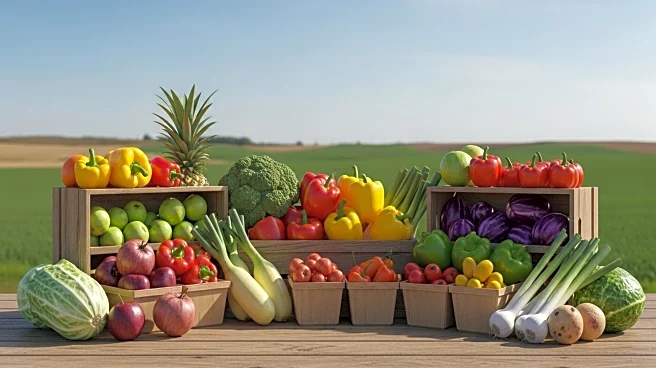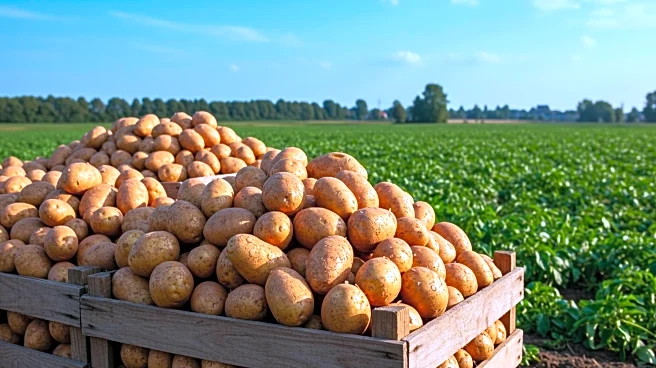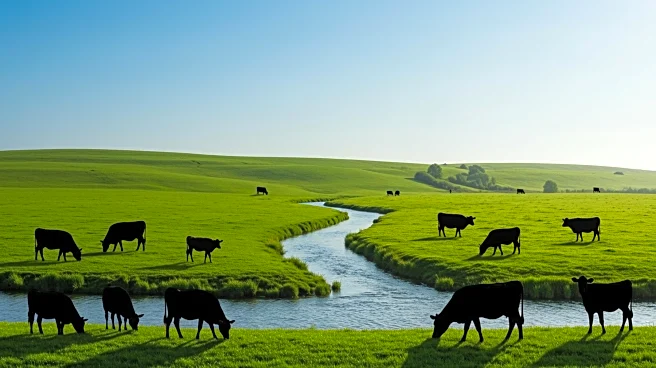What's Happening?
In Morton County, North Dakota, the agricultural landscape is characterized by a diverse array of crops, including corn, alfalfa, sunflowers, soybeans, and more. This diversity provides farmers with the flexibility to adapt to fluctuating market conditions. Jaden Russell, an agent with North Dakota State University Extension, highlights the benefits of this diversity compared to regions dominated by single crops like corn and soybeans. The varied agricultural practices in Morton County allow farmers to mitigate risks associated with low crop prices by shifting focus to more profitable or sustainable options. This adaptability is crucial in times when market prices for staple crops are not favorable.
Why It's Important?
The diversity in crop production in regions like Morton County is significant for the agricultural economy. It provides farmers with options to manage economic risks and potentially increase profitability. By not relying solely on one or two crops, farmers can better withstand market volatility and avoid losses. This approach also supports the sustainability of the agricultural sector by encouraging varied crop rotations and soil health. The ability to pivot between different crops or integrate livestock farming offers a strategic advantage, especially in times of economic uncertainty.
What's Next?
Farmers in Morton County and similar regions may continue to explore and expand their crop diversity to further enhance economic resilience. As market conditions evolve, there may be increased interest in alternative crops or livestock integration to capitalize on favorable market trends. Agricultural policies and support systems may also adapt to encourage and facilitate this diversity, providing farmers with the necessary tools and resources to make informed decisions.
Beyond the Headlines
The emphasis on crop diversity in agriculture not only impacts economic resilience but also has broader implications for environmental sustainability. Diverse cropping systems can improve soil health, reduce pest and disease pressures, and enhance biodiversity. This approach aligns with growing environmental concerns and the need for sustainable agricultural practices. Additionally, the cultural and community aspects of farming may benefit from this diversity, fostering innovation and collaboration among farmers.











